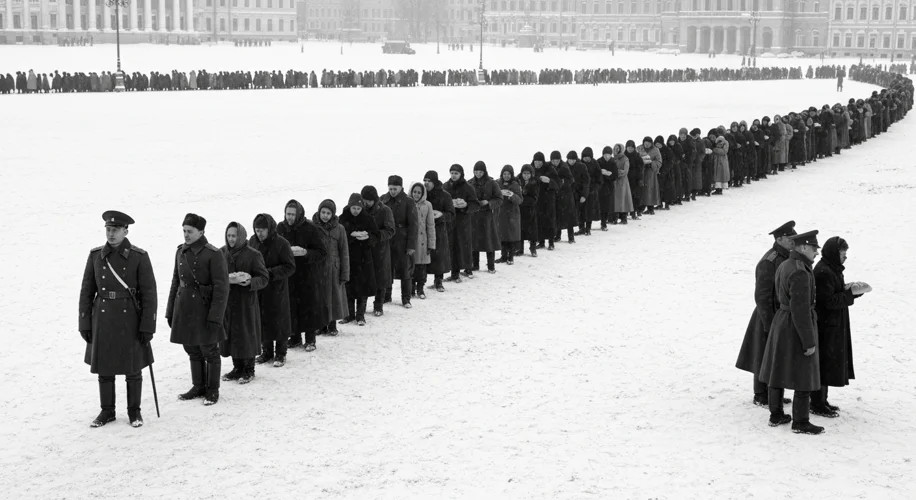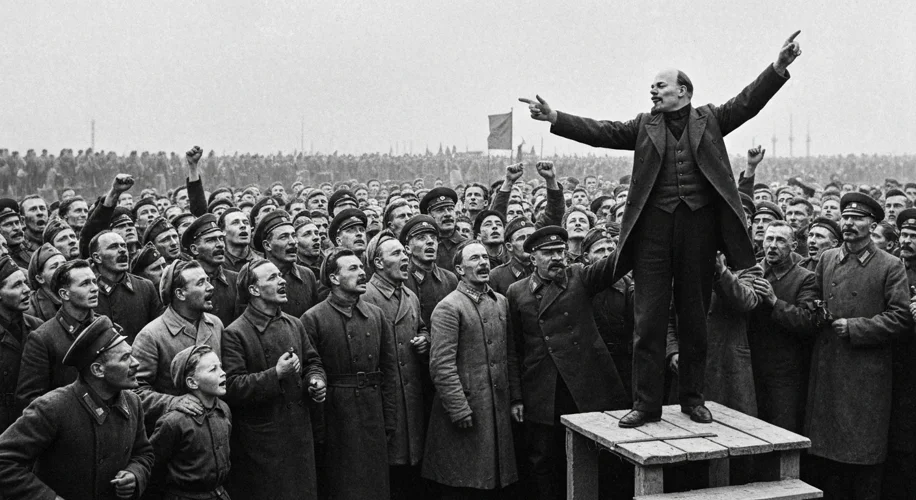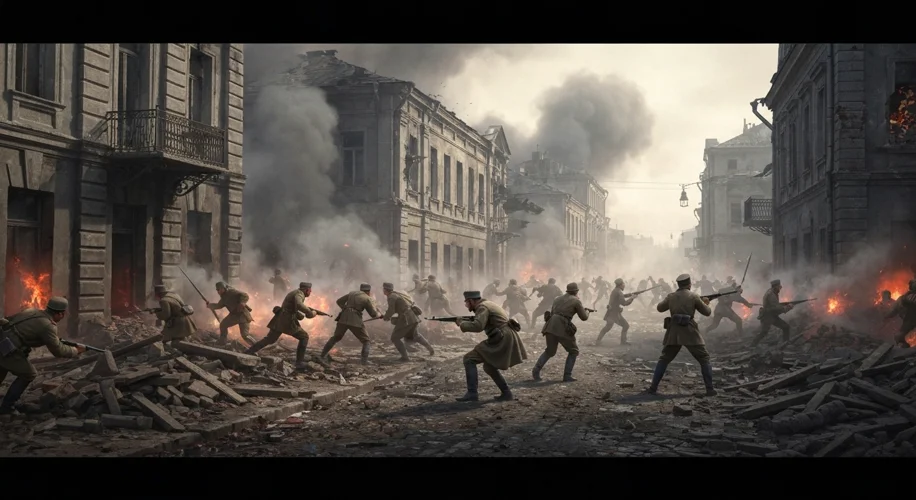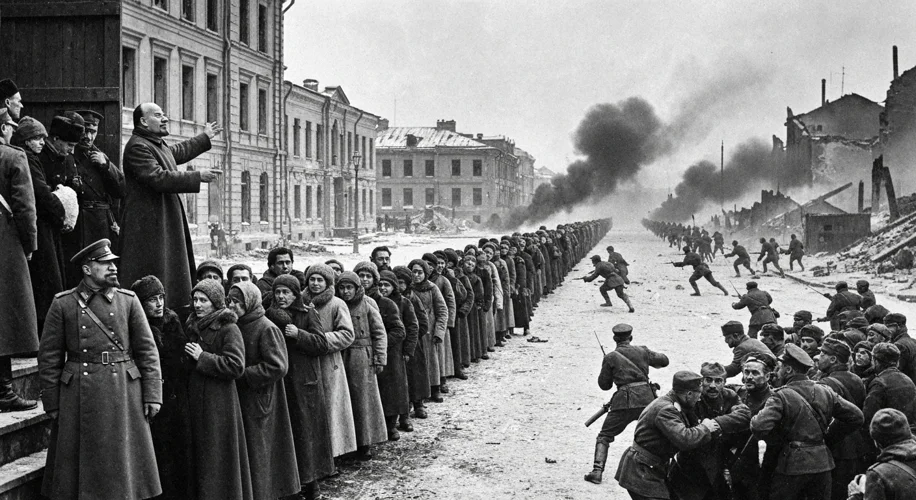The year is 1917. The snows of Russia are melting, not just from the advent of spring, but from the tears and blood of a nation on the brink. For centuries, the Romanov dynasty, with its opulent palaces and absolute power, had ruled over a vast, often brutal, land. But beneath the gilded surface, a storm had been brewing, a tempest of discontent that would soon tear down an empire and forge a new world.
Imagine the scene in St. Petersburg, renamed Petrograd during the Great War. The air is thick with the scent of coal smoke and the gnawing pang of hunger. Bread lines stretch for blocks, their silent queues a testament to the crippling shortages brought on by a war Russia was ill-equipped to fight. The mighty Russian army, once the pride of Europe, is now a broken force, its soldiers clad in rags, many armed with little more than farm implements. They are fighting a war for a Tsar they barely see, a Tsar whose decisions are increasingly dictated by dark rumors and the hypnotic influence of Grigori Rasputin, a Siberian mystic whose power over the royal family had become a national scandal.

The Tsar, Nicholas II, a well-meaning but fundamentally indecisive man, was tragically out of touch with the suffering of his people. He had ascended to the throne with the naive belief that he could maintain the autocratic traditions of his ancestors. Yet, the whispers of revolution had begun long before 1917. The bloody Sunday of 1905, when peaceful protestors marching to the Winter Palace were met with rifle fire, had shattered any lingering illusions of the Tsar’s benevolent rule. Although a Duma, or parliament, was created in the aftermath, its powers were severely limited, a mere concession that did little to quell the deep-seated resentments.
The stage was set for a confrontation. In February 1917 (March by the Gregorian calendar), the dam of popular frustration finally broke. It began with protests by women in Petrograd demanding bread. Soon, factory workers joined them, their cries echoing through the frozen streets. The crucial turning point came when the soldiers, sent to quell the uprising, refused to fire on their own people. Instead, they joined the ranks of the protestors, their loyalty shifting from the Tsar to the revolution.
Within days, Nicholas II was forced to abdicate, bringing an end to over 300 years of Romanov rule. A Provisional Government was formed, promising reforms and a democratic future. However, this government was plagued by its own indecisiveness, notably its commitment to continue Russia’s involvement in World War I, a war that had already bled the nation dry.
Into this power vacuum stepped a charismatic figure: Vladimir Lenin, leader of the Bolshevik Party. A fervent Marxist, Lenin had been exiled but returned to Russia in April 1917, famously transported in a sealed train car by the Germans, who hoped he would destabilize their enemy. His slogan, “Peace, Land, and Bread,” resonated deeply with a war-weary, land-hungry populace. The Bolsheviks, a radical faction of socialists, promised a complete overhaul of society, advocating for the overthrow of capitalism and the establishment of a workers’ state.

The Provisional Government struggled to maintain control. Simultaneously, councils of workers and soldiers, known as Soviets, began to gain significant influence, creating a situation of “dual power.” Lenin and his fiery orator, Leon Trotsky, skillfully exploited this instability. They organized worker militias, the Red Guards, and stoked revolutionary fervor.
In October 1917 (November by the Gregorian calendar), the Bolsheviks struck. Under Trotsky’s meticulous planning, Red Guard units seized key government buildings, railway stations, and communication centers in Petrograd with surprisingly little bloodshed. The Winter Palace, the seat of the Provisional Government, was stormed, its defenders overwhelmed. The revolution had succeeded.
But the overthrow of the Tsar was only the beginning. The Bolsheviks, now in power, faced immense challenges. They immediately withdrew Russia from World War I, signing the Treaty of Brest-Litovsk, which ceded vast territories to Germany. This unpopular treaty, coupled with the Bolsheviks’ increasingly authoritarian rule, ignited a brutal civil war. For nearly three years, the Bolshevik ‘Reds’ fought against a motley alliance of anti-Bolshevik forces, the ‘Whites,’ supported by foreign powers who feared the spread of communism.

The Russian Civil War was a period of unparalleled brutality, marked by widespread famine, terror, and the execution of the entire Romanov family in July 1918. The Bolsheviks, under Lenin’s leadership and later solidified by Joseph Stalin, ultimately emerged victorious, forging the Union of Soviet Socialist Republics (USSR) in 1922.
The consequences of the Russian Revolution were seismic. It ended an autocratic monarchy, ushering in the world’s first communist state. It inspired communist movements across the globe, fundamentally reshaping geopolitical alignments and fueling the ideological battles of the 20th century, most notably the Cold War. The revolution’s legacy is complex and contested, a stark reminder of how desperate societal conditions can ignite radical change, with profound and lasting implications for the entire world.

